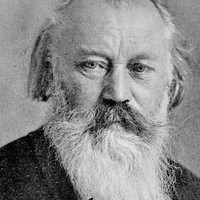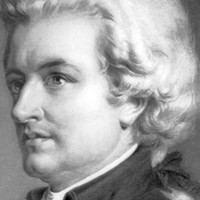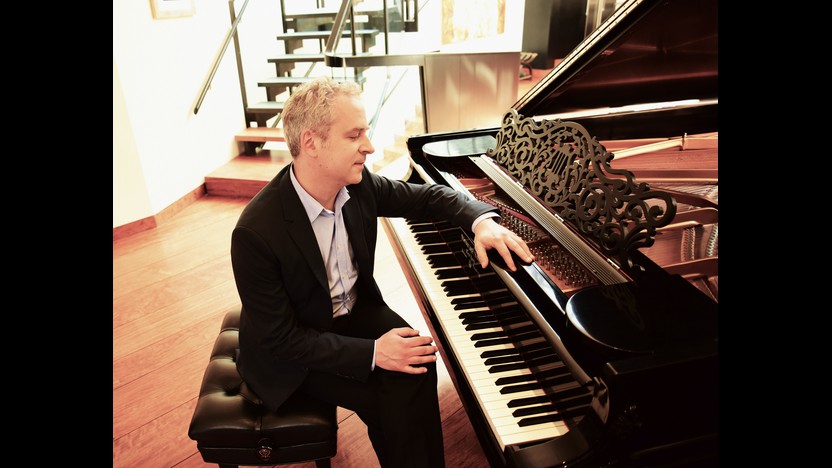Details

Johannes Brahms
Piano Quintet
Steven Copes, violin
Ruggero Allifranchini, violin
Maiya Papach, viola
Peter Wiley, cello
Between 1860 and 1865, Brahms issued seven pieces of chamber music that marked his true arrival as a composer for the ages. The Piano Quintet had its first life in 1862 as a string quintet with two cellos, but the violinist Joseph Joachim protested that strings could not do the music justice. Brahms next forged the quintet into a sonata for two pianos, which he performed in 1864; this time his other closest musical confidante, Clara Schumann, argued that the material was ill suited for a sonata. Brahms found the ideal solution in a quintet for piano and strings, a format associated with his late mentor, Robert Schumann. Brahms allowed the two-piano version, now known as Opus 34b, to stand alongside the piano quintet he completed in 1864, but the earlier string quintet version joined his long list of destroyed works.
The Piano Quintet has all the hallmarks of Brahms’s mature style: ceaseless thematic development, propulsive cross-rhythms, phrases that arc over bar-lines, and fervent themes with a tinge of Gypsy blood to them. The epic first movement unfurls its primary melody in naked octaves, holding back its full power until the second appearance. The contrasting theme provides no respite from the stormy material: it migrates to C-sharp minor, separated from the home key by the devilish interval of a tritone.
In the Andante un poco adagio second movement, there are no show-stopping melodies, and only a handful of deviations from the relaxed three-beat pulse; the driving force here is the rhythmic texture, with its insistent emphasis on off-beats. Contrasting this reserved introspection, the scherzo introduces rousing motives and a touch of martial pomp. The movement ends on a chord that begs for resolution to the home key of F, an arrival that comes with the cellist’s delicate entrance to begin the finale. A tragic introduction postpones the arrival of the Allegro non troppo body of the movement, setting up the cellist’s arrival on a new melody of folk-like simplicity. After episodes that touch on the haunting texture of the introduction, the pace accelerates for a Presto, non troppo coda. The final phrases devolve into a battle of displaced accents, and the quintet ends with the musicians still embroiled in rhythmic conflict.
Aaron Grad ©2013

Wolfgang Amadeus Mozart
Piano Concerto No. 25
Mozart completed yet another piano concerto on December 4, 1786, and he probably premiered it the following day at an Advent concert held in a Viennese casino. It turned out to be the end of the remarkable run that produced 12 new piano concertos in a span of 34 months. (Mozart couldn’t compete with a protracted war against the Ottoman Empire, which disrupted Vienna’s ruling class and dried up demand for entertainment.) He did add two more concertos in his five remaining years, but performing became a much smaller part of his musical life. Opera came to occupy more of his time, especially after the success of The Marriage of Figaro in 1786, the first of three collaborations with librettist Lorenzo da Ponte. When Mozart turned to large instrumental works in the following years, it was more with an eye toward publication, such as the two string quintets from 1787 and three symphonies from 1788.
There is a sense in the Piano Concerto No. 25 that Mozart already had symphonies on his mind. From the outset of the Allegro maestoso first movement, motives circulate with obsessive focus, foreshadowing Beethoven’s single-minded ruminations. The Beethoven comparison is all the more salient given the striking similarity between Mozart’s five-note rhythmic stamp, short-short-short-long-long, and the hook of Beethoven’s Fifth Symphony, short-short-short-long.
The central Andante movement establishes a veiled language of arpeggios and limited harmonies. Sporadic flurries of faster music arise like stifled giggles, counteracting the sanctity of the primary material.
The Allegretto finale, coming after two profound movements, opts for carefree dancing. Mozart derived the opening theme from his 1781 opera Idomeneo, retaining the characteristic two-note lead-in of a gavotte dance.
Aaron Grad ©2017
About This Program
This program marked the return of audience favorite Jeremy Denk, “a pianist you want to hear no matter what he performs“ (The New York Times). Denk joined a group of SPCO musicians to perform Brahms’ Piano Quintet in F Minor, followed by Mozart’s Piano Concerto No. 25, a work distinguished Mozart authority H.C. Robbins Landon called "the grandest, most difficult and most symphonic" of all of Mozart’s concertos for piano.

